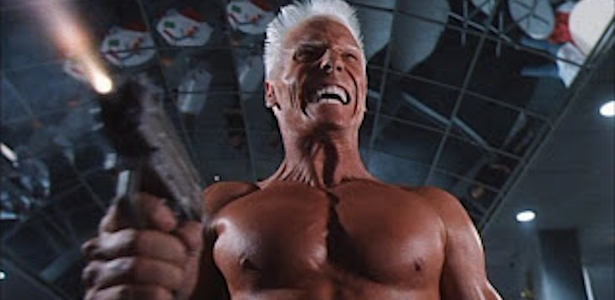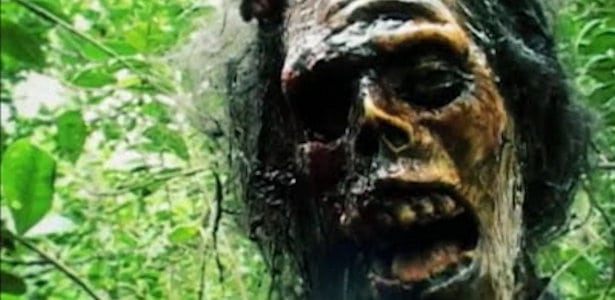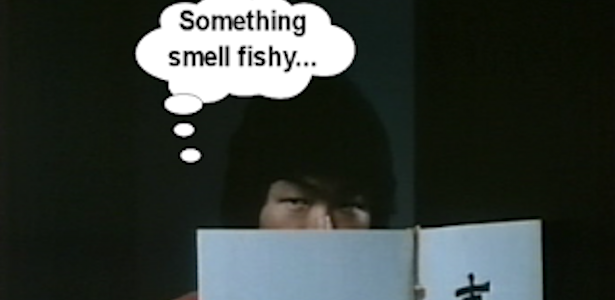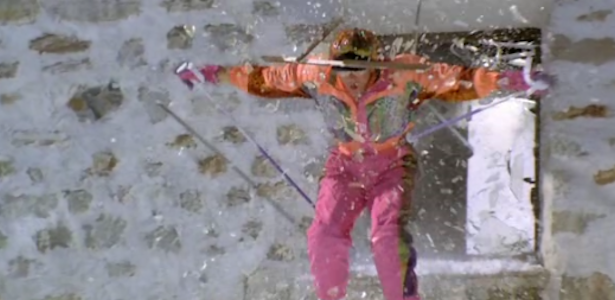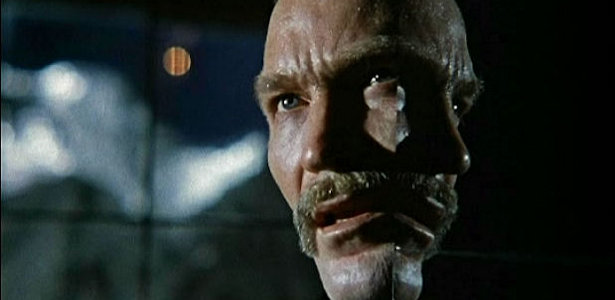Once upon a time there was a movie about a giant lizard that trampled buildings and was shot down by the military. That movie was such a huge, global success that it spawned a film from a rival company about a giant turtle that was… erm… a friend to kids everywhere. That movie was such a success that decades later, after the big lizard made a grand return, so did the turtle.
Arguably Shusuke Kaneko’s GAMERA trilogy (1995-1999) are the pinnacle of kaiju cinema. Kaneko seamlessly integrated a variety of special effects techniques and brought the camera down to a human eye level to deliver some of the most impressive rubber monster battle sequences ever filmed. They also managed to be family friendly without being cloyingly cute or dripping with saccharine. An uncommon attribute among Japanese kiddie monster flicks (*cough* MOTHRA *cough*). So what the hell did Kaneko do before he raised the bar on the kaiju? Well, there was an exceptionally err, “cool”, entry in the Lovecraft inspired anthology NECRONOMICON (1993) and if you were one of those people who lived in an urban cave constructed entirely out of VHS tapes, you would have seen a movie called MY SOUL IS SLASHED floating around the grey market. Inconceivably this was pre-internet days, involving paper, stamps, and waiting for sometimes weeks for a movie if not months, if not never (*cough* Donald Farmer *cough*). Excuse me, I seem to have an itch in my throat. Bearing an amazingly cool title, but no subtitles, I passed on it back in the day, but after NECRONOMICON and the GAMERAs came and went I finally decided to see if Kaneko’s early effort showed the potential that he realized in his next few efforts. It’s taken me over a decade to get around to it, but I’ve finally gone there courtesy of a typically crap-quality Floridian bootleg that I digitally enhanced to make it barely watchable.
The film opens with an incredibly cool credit sequence featuring scenes from the original Dracula story done with puppets in a hyper-gothic style, which surely made Tim Burton green with envy. The camera pulls in and out of the scenes and rotates around the sets giving the scenes an extra dimension. This is so effective that it makes me wish the entire movie was done using this technique and with perhaps a different script as well. Not that the script is terrible, but the atmospheric visuals and gothic score really set the tone for a movie that this certainly is not.

During a modern-day revolution in Romania, a blood sample of a well known historic figure is lost in the scuffle. The sample ends up in Japan in the hands of Izoku, a hospital phlebotomist whose life-long obsession with Dracula (and her family inheritance) has lead her to this moment. While analyzing the blood sample, and realizing that it is indeed Dracula’s, she is suddenly called back to her duties and has to hide the sample in the plasma cooler.
Meanwhile typical cute and silly Japanese school-girl Saeko (Hikari Ishida), amusingly pronounced “psycho”, is turning 17, but her father is too busy with his work for a medical company to notice. Ishikawa (Ken Ogata) is in upper management and the project lead on a new pharmaceutical product that has taken years of his life to produce and is now suddenly being accused of being tainted. The scandal is all over the news and Ishikawa is certain that it is a result of sabotage from within the company. He is right, of course, and worse still is that the corporate connivers are not content with causing the corruption of his career. So they decide to run him over with a car. Not exactly as smart or subtle as their scheme to bring down the powers that be, so that they can take the reigns, but seemingly effective. Or is it?
Ishikawa is rushed to the hospital where, yes, of course, he is accidentally given a transfusion with Dracula’s blood. Next thing you know Ishikawa is dead, his company has been taken over and his family is in mourning. Not quite what I was expecting, but hey, I’ll go with it. At the funeral Izoku makes the most awkward introduction ever by asking Saeko if she is a virgin and informing her that her blood can bring pops back from the grave. She neglects to mention in what shape he might return, but that oversight is no doubt due to the fact that she was being dragged off the premises by angry pallbearers. Saeko eventually gives it a shot and dad eventually does return, though not in rented formalwear, but completely in the buff leading to, again, the most awkward of reunions.
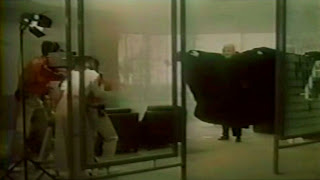
Ishikawa is desperate to resist his new nature and Izoku is desperate to be a bride of Dracula, trying to romance Ishikawa while teaching him how to use his new powers. One of her lessons has him jumping off the slide at a playground while wearing a red and black cape. Being a Japanese movie, Ishikawa is still obsessed with his work and finding out who sabotaged his new drug, which has now been re-branded and has made the company a financial success.
The movie isn’t bad, but it’s pretty disappointing after seeing Kaneko’s greater works and particularly those fantastic opening credits. It’s a pretty lightweight, almost sit-com style, movie in which some of the jokes are amusing, but they don’t really build as the movie progresses. One of the more amusing bits is when Ishikawa returns to work after a year of being dead, oblivious to the past and the reactions of his former co-workers. These gags are sprinkled throughout the script making the film sort of a comedy, sort of a romance, sort of a vampire movie and sort of entertaining. To me the most interesting moment in the movie was when they introduced Ishikawa’s wife’s new love interest; the chef at her restaurant who is the slowest moving chef you will ever see in your life. He barely can crank out four plates and even then there's it's just a protein on a sauced plate! No sockle, no garnish! It’s a good thing they only have one table booked. Maybe if the customers are lucky they’ll get to eat something before the restaurant closes. Ermmm... anyway...
MY SOUL IS SLASHED (the title being derived from the Mylène Farmer pop song that is played during the end credits) is pretty amiable entertainment only made better by seeing some of Kaneko’s recent efforts. Although I have somehow managed to miss his recent film THE POLEDANCING BOYS (don’t ask, I don’t know), I did catch the first of his manga-based DEATH NOTE films and I would definitely recommend MY SOUL over that as it may not be the best of his oeuvre, it certainly isn’t the worst.




